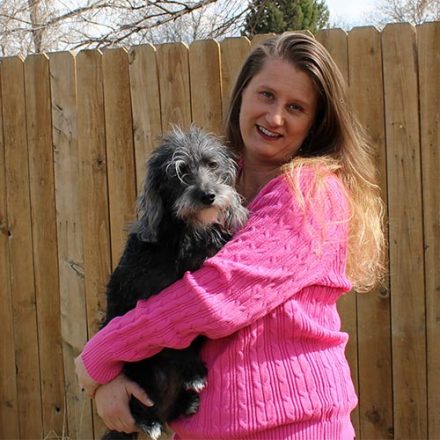Dogs, as they say, are our best friends. They offer us companionship, comfort, and support. Many owners feel that their pups can sense their mood changes and emotions. We’ve all been there, sad, distressed, upset with the world, and needing a friend. Along comes a soft paw and a wet nose to offer greatly needed comfort. While pets often give us affection, does this mean they know exactly how we feel?
Dogs often mimic the energy and emotions they see in us. They understand what our normal emotions are and will detect changes. What’s behind this supportive behavior? A canine’s responsive and intuitive nature is part of what makes them excellent companions, service animals, emotional support companions, and working animals. We look a little closer at the specific subject of whether dogs can tell if we’re sad.
Do Dogs Know When You Are Sad?
Yes, dogs can sense emotional changes, including sadness. Because canines rely more heavily on different senses, they are very intuitive to human behavior and emotion. Our canine companions can read facial expressions and detect changes in our tone of voice or behavior patterns.
Canines may not understand specific emotions exactly the way we do, but they will pick up on these clues and understand that their owner is upset. In the same way that pups get excited when their owners do, they can understand their owner is feeling something different than their normal emotional state.
How Can My Dog Tell I Am Sad?

Comparatively speaking, canines have the thinking level of toddlers and can understand and experience basic emotions. Canines use their heightened senses to understand what’s happening around them, including their owner’s behavior and mood. Sometimes, owners may smell different if they are not feeling well. A pup may pick up on a smell from a sickness, bacteria, or virus. If an owner is feeling down emotionally, and it is due to illness, pups may smell that change and respond.
Behavioral changes in an owner are very obvious to dogs, as they may disrupt the animal’s routine. Along with that, canines notice when an owner starts to breathe heavily or has other physiological changes like sweating, breathing rapidly, or having a significant change in voice. Dogs can also read facial expressions extremely well and notice, for example, if an owner appears distressed.
What The Research Says
Much research has been conducted to understand the cognitive ability of canines and their perception of emotion. One 2016 study from the University of Lincoln, UK, indicated that dogs can recognize human emotions through image and sound. These findings do not mean that canines can differentiate between emotions or specifically identify sadness.
Still, they will notice behavioral changes and can match distressed facial expressions and sounds to negative emotions. A dog can even sense depression in an owner and often has a supportive, protective response, which is part of why canines make such good support animals.
In another study, researchers used human sweat to test canine olfactory instincts and responses. They determined that canines showed more stressful responses when exposed to odors of fear in the sweat over more positive emotions.
Canines can also process the different changes in human voices and vocal tones that happen in response to emotional states. They pick up on these nonverbal clues and process whether the voice is positive or negative. It is not the words that are being said but rather the tone and sound of voice.
A 2016 study published in the journal Science by researchers at Eötvös Loránd University in Hungary used functional magnetic resonance imaging (MRI) to scan dog’s brains as they were given vocal cues in different tones of voice. The result showed that dogs were sensitive not only to what was said but the tone in which it was said.
Canines also often experience something called emotional contagion. It occurs when their owner’s behavior and emotions lead to similar behaviors in them. Emotional contagion can happen with people, too, as is often seen with small children. A canine will reach the emotional cognition of about a two-and-a-half-year-old human to give some perspective on how they process emotions.
Throughout history, people have worked to understand how the canine brain works and why they have such a close relationship with humans. Historically used as working animals, canines have developed into our beloved companions. As humans began to care more for the canine species, bring them inside, and treat them as family, the interaction and understanding of emotion between the two species became deeper. As canines became more domesticated, they developed more human-like communication skills.
Do Dogs Have Feelings?

They do have feelings, but not in the exact same way humans do. We often interpret pet behavior, expressions, and emotions through our own social-emotional perceptions. For example, we may think a pet is sad when we leave, upset that they didn’t get a certain kind of treat, or they feel guilty for naughty behavior.
In truth, pets often respond to our behavior. For example, a guilty look is due to being scolded rather than feeling bad about eating your shoes or other bad behavior. That said, canines do have feelings similar to the way people do. Research using brain scans of canines has shown the same area of brain response as people with similar emotions. Canines also have chemicals in their brains the same as humans, including cortisol, oxytocin, and dopamine, that are involved in our emotional changes.
Canines do not experience the same range and intensity of emotions as humans do. Again, think of what a toddler might feel. A pup can feel happy, sad, fearful, grief, jealous, stressed, anxious, and excited. However, they do not feel more complex emotions like pride, shame, or contempt. So, our pups have feelings, but not in the same way humans do.
How Do Dogs Feel When You Are Sad?
Canines often emulate and imitate how their owners feel. When an owner is distressed, they will feel distressed. Their initial instinct is to want to help. Research has proven that dogs want to help their owners when they sense them in distress. It carries over to them wanting to help comfort and make things better when their humans are sad.
Do Dogs Comfort You When You Cry?
Do dogs understand when an owner is crying? This question comes up a lot. The combination of visual and audible observations helps canines understand an owner is crying and feeling a negative emotion. They may have an instinctual response to comfort. Not all pups will want to offer comfort when someone is crying. Some may feel upset and want to remove themselves.
The close bond and relationship an owner has with their pet contribute to the response a dog has to human sadness. A pet dog will usually comfort a crying owner, but an unknown dog likely will not. A dog that has been trained to offer emotional support may have a different response than one who has not had that same experience. Much of a pup’s emotional response to humans will depend on the individual circumstances.
Personal Experiences With Dogs Sensing Sadness
I have seen dogs react to sadness both in my personal and professional life. During my educational career, I had the honor of working with children with special needs. We were involved with a program that allowed them to spend time reading with fluffy pups for emotional support. The animals and kids formed bonds, and it was heartwarming to see. We often let the children see the pups when they were upset, as the interaction always had such positive results.
When children were sad, the pups would place themselves near them or rest against them, offering gentle support and a sense of calm. Reading to the animals then helped emotions calm down and reset to a more productive place.
In my personal life, I have had a dog offer comfort during times of sadness. One time was when I experienced the sudden loss of a very important family member two years ago. I was very distraught, and when I was in moments of immense sorrow, my dog Daisy came to sit with me and cuddle with me quietly. Daisy could sense the change in me and spent most of her time very close to me.
It was not a short time of grief, and she offered support in a way I needed, simply being there, snuggling in, and giving me a quick lick or two on the face. While she could sense I was upset, Daisy could not understand the source of my grief. At the moment, just having that support, unbridled, unconditional, and without having to ask for it, was a true comfort. One I am not sure a human could have provided.
“Our dogs 100% can tell when I’m sad. They can sense if I’m sad even if I’m halfway across the house. I’ll suddenly feel a little wet nose nudging my hand. Our dog Bella (rescue, yellow lab mix) was particularly astute at knowing when one of us was sad. And our dog Lily (rescue, brown mix) would come over and cuddle with you, sit on your feet, etc., when she sensed you needed some lovin’.”
– Alex Schenker, Rescue Dog Parent
Frequently Asked Questions

We know pet owners have many questions about how their pets sense human sadness and if dogs feel emotions the way we do. Below, we answer some of these commonly asked questions about dogs and sadness. I we haven’t addressed your questions here, please ask us in our comments.
Do Dogs Feel Sadness?
Yes, dogs do feel sadness. They will start to show behavior and attitude changes. Some may lose interest in food, lack energy, or become overly clingy. Sometimes, sad pets act withdrawn, with no interest in playing walks or treats. A pup may feel sad for various reasons, and they can become lonely and miss people or other pets that have left. Canine sadness is less intense than human sadness and can be a reaction to immediate surroundings or circumstances.
Can Dogs Cry?
No, they cannot cry the same as humans. Their eyes can produce tears, but these are not released due to emotional feelings. Pups may whimper, moan, whine, and hide their faces, but emotional crying is not something they are capable of. Some studies have shown an increase in tear production during happy emotions, like reuniting with their owner. However, more research needs to be done on the subject to understand if this correlates to emotion, both negative and positive.
What Should I Do If My Dog Is Sad?
Offer your pup more attention. Try to introduce new games and toys. Offer snug places to rest, special treats, and healthy food. Try taking your pup out on new adventures to perk them up. It also helps to try to identify the trigger that’s making your dog sad. Have you changed things at home, moved to a new house, or gotten a new pet? Has someone moved away or gone on a trip? If you’ve changed routines, trying to get back to what they are used to can help. Learn more about how to show your dog you love them.
If your dog isn’t eating, has low energy, and does not perk up after your best efforts, it’s time to see the veterinarian. Take your pup for a check-up to rule out any underlying medical conditions.
Looking For Ways To Get Your Dog Active?
The emotional connection with our furry family members is a beautiful part of the unforgettable relationship people have with dogs. While pets offer us many benefits, we have to make good choices for them and their health. Keeping them active and engaged is tricky.
Along with the usual walks and games of fetch, owners need to provide a variety of interactive toys and activities, such as learning tricks and agility training. These activities may change as your pup matures and grows older. Just as our dogs are here for us, we must be there to support them as they age.
Do you have a story about your sweet dog helping you through a difficult time? We would love to hear your experience in the comments below.





